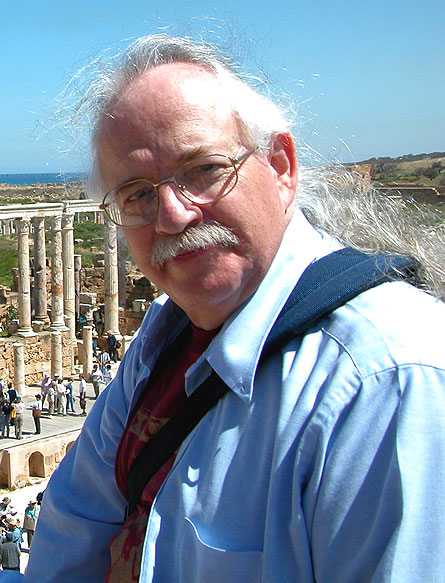Enjoy the indelible experience of emulating Galileo
- More than 2 years ago
I was tickled when Rick Fienberg, then editor of Sky & Telescope magazine, stood up at a special session at the August 2006 meeting of the International Astronomical Union in Prague, grabbed the microphone and proclaimed that every person on Earth should look at the night sky through a telescope in 2009, as Galileo did 400 years earlier. Audacious? Yes! Appropriate? Absolutely! Practical? Well … of course not! But Rick’s enthusiasm soon caught on, and it made good sense. Better sense, I thought, than the mess astronomers got themselves into over the “demotion” of Pluto a few days later.

As a reader of Science News, you don’t have to be told to go outside some night and look through a telescope at Mars, Saturn or the moon. You probably already have had the pleasure to do so and therefore accept that there is no better way to enhance science awareness than to engage in the direct observation of nature and all the wonderfully wild things in it.
Casual observation is, of course, only a first step, and Fienberg’s goal just the foot in the door. But looking through a telescope can be a memorable experience, especially if the person peering into the eyepiece is properly instructed on how to see all that the telescope can reveal and is prompted to realize that the photons striking his or her retina have been traveling through space for seconds, or centuries, or longer. And all those photons, now collected by the telescope and concentrated into their eye, are in fact theirs and theirs alone to savor, as long as the memory lives.
Beyond the obvious romance of standing in the dark and viewing infinity, there are other benefits that the casual observer can accrue. In the spirit of Robert Hooke, disciplined seeing and communicating the experience are the next two steps along the path. When I have a chance to guide visitors to look through a telescope at the U.S. Naval Observatory, or on occasion from the terrace of the National Air and Space Museum, I ask people to report to the rest of us what they are seeing. Descriptions from visitors, especially kids, can be delightful and insightful, alerting those down the line what to expect, firing their imaginations, and stimulating discussion and friendly banter. Does everyone agree on what they see and how to describe it? No. Viewing through the eyepiece is a solitary act. But the shared experience is social and indelible.
The International Year of Astronomy 2009 — fostered by the IAU and its 137 (and counting!) adhering countries, by the U.N. and UNESCO — is indeed a social phenomenon. Just look at the website www.astronomy2009.us and click on “Projects.” Dozens pop up, from everywhere, by a wide range of enthusiasts, all inviting you to participate and enjoy. By the time you read this, 400 Years of the Telescope, sponsored by the National Science Foundation, will have premiered on PBS stations across the nation. Soon thousands of surprisingly inexpensive Galileoscopes will be introducing millions of people to views of the moon, planets and stars far clearer but still reminiscent of Galileo’s. And there’s a way to leverage this experience: You can purchase a telescope from www.galileoscope.org, and you can also donate one, at reduced cost, to those unable to afford the $15 price.
IYA 2009 activities have already started at the Smithsonian’s National Air and Space Museum. The Exploring Space Lecture Series, presented monthly from March through June, will be directed to both the popularity of astronomy and the present state of play, contrasting them with Galileo’s time. Our popular Saturday Family Days in April and October are devoted to IYA 2009 themes. By July 1, we hope to open the first public observatory on the National Mall, on a street-level terrace of the museum. With funding from the NSF, we’ve borrowed a 1960s-era Boller & Chivens 16-inch reflector from Harvard and are now placing it in a 22-foot dome visible from Independence Avenue. It will welcome visitors at least four hours a day, 364 days a year (weather permitting). We will be doing our part to heed Rick Fienberg’s call.
Outreach is nothing new to the museum life, but it’s enhanced by the community spirit of IYA 2009. In February, we locally debuted 400 Years of the Telescope as a warm-up for this year’s John Bahcall Lecture. Invited by NASA and the Space Telescope Science Institute, astronomer Sandra Faber carried more than 400 listeners in the audience to the limits of imagination, from quantum fluctuations to supermassive black holes, to the point where one breathless woman rushed up after the Q&A to ask, as if her life depended upon it, what the difference was between a star and a galaxy. She had to know. So let’s all do our part this year to invite her, and the millions she represents, to see both for herself through a telescope.
David H. DeVorkin is senior curator for astronomy and the space sciences at the National Air and Space Museum.